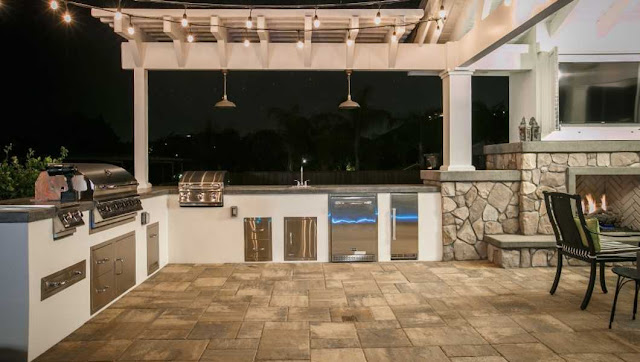A Guide to Custom Outdoor Kitchen
Creating a custom outdoor kitchen can be a fantastic addition to your home, allowing you to cook and entertain in the great outdoors. To help you get started, here's a guide to planning and building your custom outdoor kitchen:
Define Your Goals and Budget:
Determine your objectives for the outdoor kitchen. Are you primarily interested in cooking, entertaining, or both?
Set a realistic budget that includes not only the cost of materials but also labor and any necessary permits.
Choose the Location:
Consider the layout of your outdoor space. The kitchen should be conveniently located, potentially close to your indoor kitchen for easy access. Ensure proper ventilation and safety measures to prevent fire hazards. One can contact for custom outdoor kitchen in Long Island, Bronx and Suffolk County.
Design the Layout:
Sketch out a layout for your outdoor kitchen, taking into account the following elements:
Cooking area (grill, smoker, oven, etc.)
Food preparation area (countertops, sink, cutting boards)
Storage (cabinets, drawers, shelving)
Dining or bar area (table, seating, bar stools)
Lighting and electrical outlets
Shade and protection from the elements
Select Appliances:
Choose high-quality outdoor appliances that are durable and weather-resistant. Common choices include grills, side burners, refrigerators, and outdoor sinks.
Ensure that the appliances fit seamlessly into your design and layout.
Materials and Surfaces:
Select materials that can withstand the outdoor elements, such as stainless steel, stone, concrete, or weather-resistant wood. Consider using tiles or stone for countertops and flooring for easy maintenance.
Incorporate weatherproof finishes and sealants. Install custom outdoor kitchen Long Island, Bronx, Suffolk County etc.
Plumbing and Gas Lines:
If your outdoor kitchen includes a sink, ensure proper plumbing connections.
If you have gas-powered appliances, consult a professional for safe gas line installation.
Electrical and Lighting:
Install GFCI outlets for electrical appliances and lighting.
Incorporate task lighting for cooking areas and ambient lighting for the dining and entertainment space.
Storage:
Plan ample storage space for utensils, cookware, and other kitchen necessities.
Consider including cabinets with weather-resistant doors and drawers.
Seating and Dining Area:
Choose comfortable outdoor furniture that complements the overall design.
Ensure there's adequate seating for guests.
Permits and Codes:
Check with your local authorities to determine if you need permits for your outdoor kitchen.
Adhere to building codes and safety regulations.
Landscaping and Aesthetics:
Integrate the outdoor kitchen into your landscape design for a cohesive look.
Add personal touches with decorative elements, such as plants, outdoor rugs, or artwork.
Maintenance:
Regularly clean and maintain your outdoor kitchen to prolong its lifespan.
Cover or protect appliances and surfaces during harsh weather conditions.
Safety Considerations:
Install fire extinguishers and ensure proper ventilation to reduce fire risks.
Implement childproofing measures if you have young children.
Final Inspection:
Before using your outdoor kitchen, have it inspected by a professional to ensure safety and compliance with local regulations.
Creating a custom outdoor kitchen is a significant project, but with careful planning and attention to detail, you can enjoy a beautiful and functional space for cooking and entertaining in your backyard. It's often a good idea to consult with professionals, such as landscape designers, builders, and electricians, to ensure that your outdoor kitchen meets all safety and functionality requirements.



Comments
Post a Comment